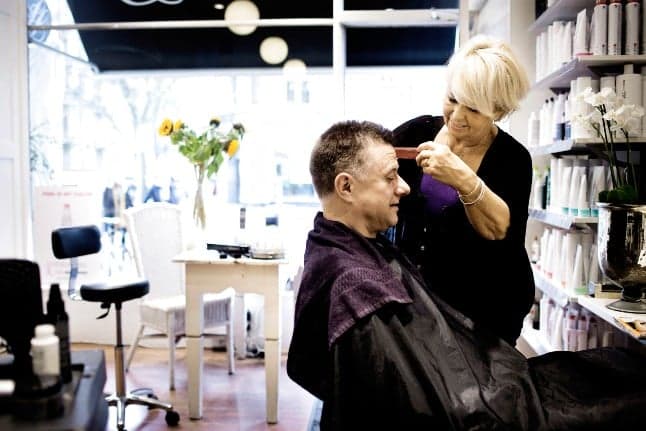Denmark to reopen hair salons and driving schools next week

Denmark's government has struck a cross-party deal to reopen hairdressers, driving schools, research laboratories, courts and some professions from next week.
"I'm exceptionally happy that the political parties in parliament have this evening agreed to expand the first phase of the reopening a little," Prime Minister Mette Frederiksen wrote in a post on Facebook.
"No one wants to keep Denmark closed a single day more than is absolutely necessary, but we must not proceed any faster than we can continue to keep the epidemic under control."
Jakob Ellemann-Jensen, leader of the opposition Liberal Party, wrote on Twitter that the accelerated opening was good news.
"After a long evening of negotiations, many can now return to work, and a more normal day-to-day life," he wrote on Twitter.
Morten Østergaard, leader of the Danish Social Liberal Party, said he was disappointed that the deal did not include Denmark's Folk High Schools and 'efterskole', or "After Schools", voluntary independent residential schools for young people between the age of 14 to 18.
"I must not hide the fact that I had hoped that it was possible to reopen after-school and colleges. I know there are many young people who would like to return," he said.
In the press release issued by the Prime Minister's Office last night, the government said that political parties would from next week begin negotiations on the second phase of the reopening, which could include restaurants, bars and ordinary workplaces.
"The goal is to clarify when further restrictions can be lifted and under what conditions. All measures will be assessed on their impact on public health and on society and the economy," the release reads.
READ ALSO:
According to DR, the professions which can resume work include:
Dentists
Hairdressers
Driving schools
Masseurs
Tattooists
Physiotherapists
The public institutions which will open include:
Courts
Family Courts
Prisons (for newly sentenced)
Research laboratories
Comments (1)
See Also
"I'm exceptionally happy that the political parties in parliament have this evening agreed to expand the first phase of the reopening a little," Prime Minister Mette Frederiksen wrote in a post on Facebook.
"No one wants to keep Denmark closed a single day more than is absolutely necessary, but we must not proceed any faster than we can continue to keep the epidemic under control."
Jakob Ellemann-Jensen, leader of the opposition Liberal Party, wrote on Twitter that the accelerated opening was good news.
"After a long evening of negotiations, many can now return to work, and a more normal day-to-day life," he wrote on Twitter.
Morten Østergaard, leader of the Danish Social Liberal Party, said he was disappointed that the deal did not include Denmark's Folk High Schools and 'efterskole', or "After Schools", voluntary independent residential schools for young people between the age of 14 to 18.
"I must not hide the fact that I had hoped that it was possible to reopen after-school and colleges. I know there are many young people who would like to return," he said.
In the press release issued by the Prime Minister's Office last night, the government said that political parties would from next week begin negotiations on the second phase of the reopening, which could include restaurants, bars and ordinary workplaces.
"The goal is to clarify when further restrictions can be lifted and under what conditions. All measures will be assessed on their impact on public health and on society and the economy," the release reads.
READ ALSO:
According to DR, the professions which can resume work include:
Dentists
Hairdressers
Driving schools
Masseurs
Tattooists
Physiotherapists
The public institutions which will open include:
Courts
Family Courts
Prisons (for newly sentenced)
Research laboratories
Join the conversation in our comments section below. Share your own views and experience and if you have a question or suggestion for our journalists then email us at [email protected].
Please keep comments civil, constructive and on topic – and make sure to read our terms of use before getting involved.
Please log in here to leave a comment.